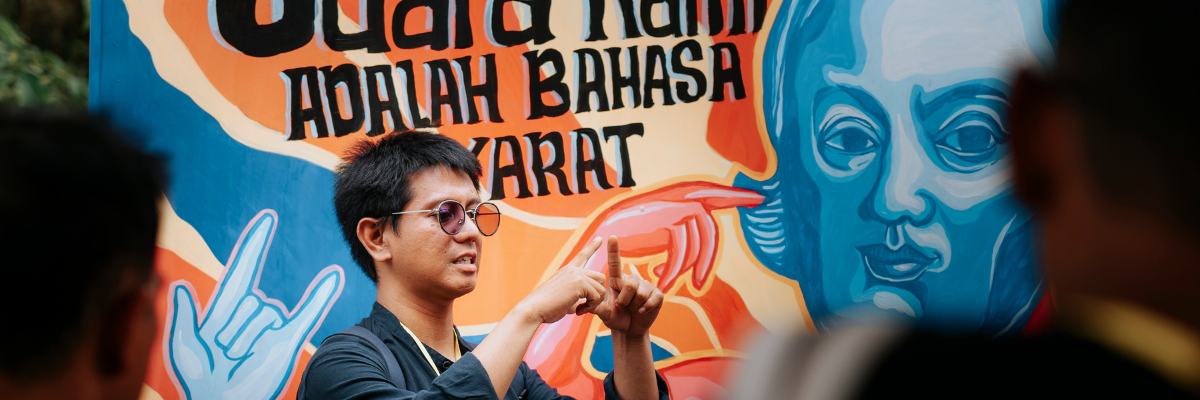KREASI: Repaint the City
Surakarta (Solo)
Home to over 300 deaf individuals (Surakarta City Government, 2022), the city of Surakarta (Solo) has a strong history of inclusion over the decades (Global Disability Innovation Hub, 2022). However, many still face challenges in everyday life – particularly in using public spaces and expressing a strong voice in the decision-making process – notably due to limited awareness of accommodations such as the use of sign language. Thus, improvements are necessary to enhance the participation of persons with disabilities in public spaces. There is a need to deepen the way citizens interact as a collective, build shared awareness, and explore the tension between spatial and social to influence change within the acknowledged existing power that currently shapes the city.
Historically, art has been used as a platform for citizens to advocate their needs. The city of Solo has a well-known, vibrant street art scene with murals adorning public places in Solo, conveying important and pressing messages to passersby. At the same time, many young people who are deaf show a great interest in photography and murals due to their strength in visual communication. There is great potential for collaboration between artists and the Deaf youth community in using urban art to deepen citizens’ participation.
Throughout 2023, Kota Kita’s team of facilitators and researchers collaborated with practitioners from Gerkatin Solo and artists from Ruang Atas in organizing Repaint the City: A Participatory Urban Arts Initiative. This program, funded by the VOICE Innovate and Learn Grant, proposed a series of activities for Deaf youth in Solo to collectively build their position through participatory methods in creative placemaking.
Participatory methods in creative placemaking
In this program, Kota Kita developed three participatory methods in creative placemaking, which explored participants’ needs and aspirations regarding public space and democratic participation. Based on the methods used, the program was conducted in three different phases:
- Phase 1: Photovoice
During the first phase, participants answered a series of open-ended questions through photography. Participants then reflected, discussed, and categorized the captured photographs to build their own narratives.
- Phase 2: Co-design workshop
In this phase, participants first discussed and turned the findings from the previous phase into key visual cues. Participants then learned about the practical skills needed for mural painting in the next phase, such as storytelling, art mediums, color theory, et cetera. Lastly, participants collaborated with artists to create the mural designs.
- Phase 3: Participatory mural
In this phase, participants and collaborators produced participatory mural artworks in three public spaces in Solo. To close the program, we held a mural launching event for policymakers, CSOs, artists, and the general public to promote the rights of young people with disabilities in Solo and the importance of a democratic and inclusive urban space.
We created a guideline for those interested in fostering inclusive and participatory arts initiatives in their communities. Download the module here: Panduan Praktis Berkreasi Bersama
